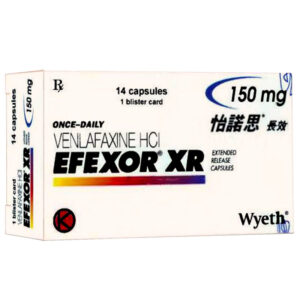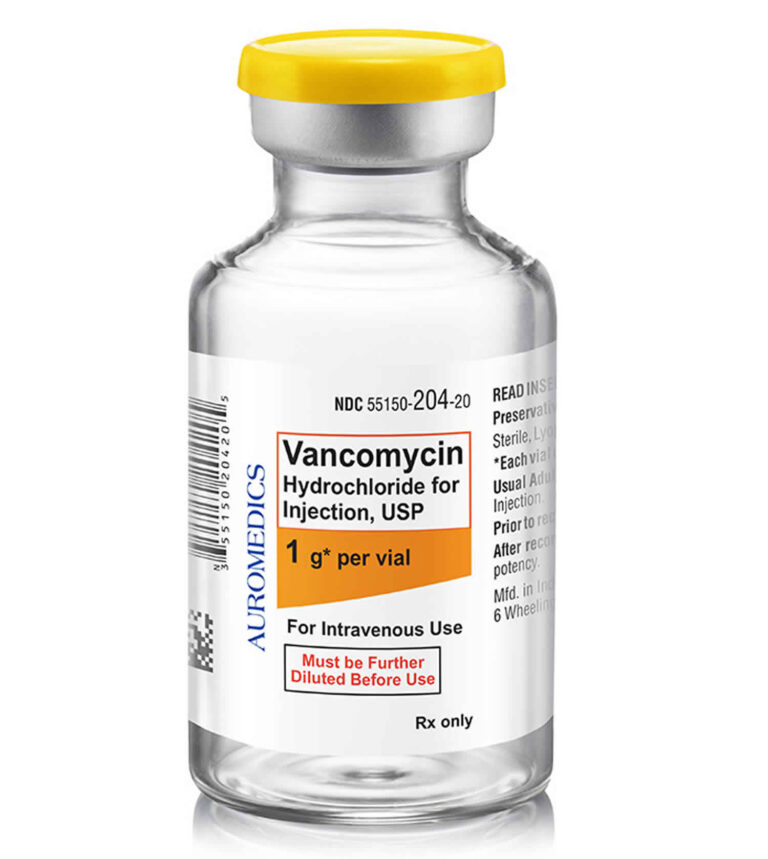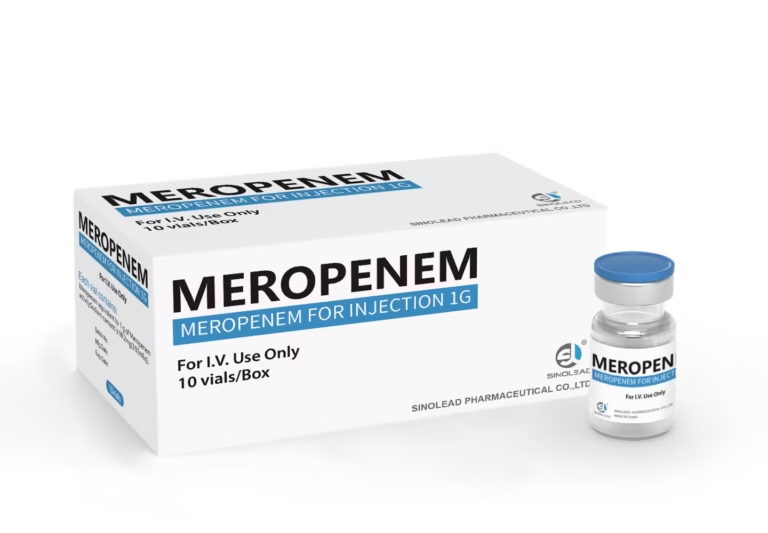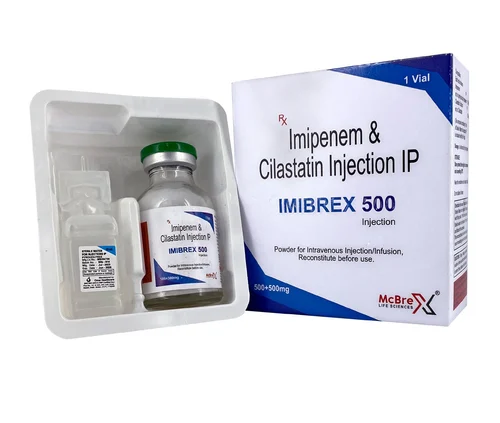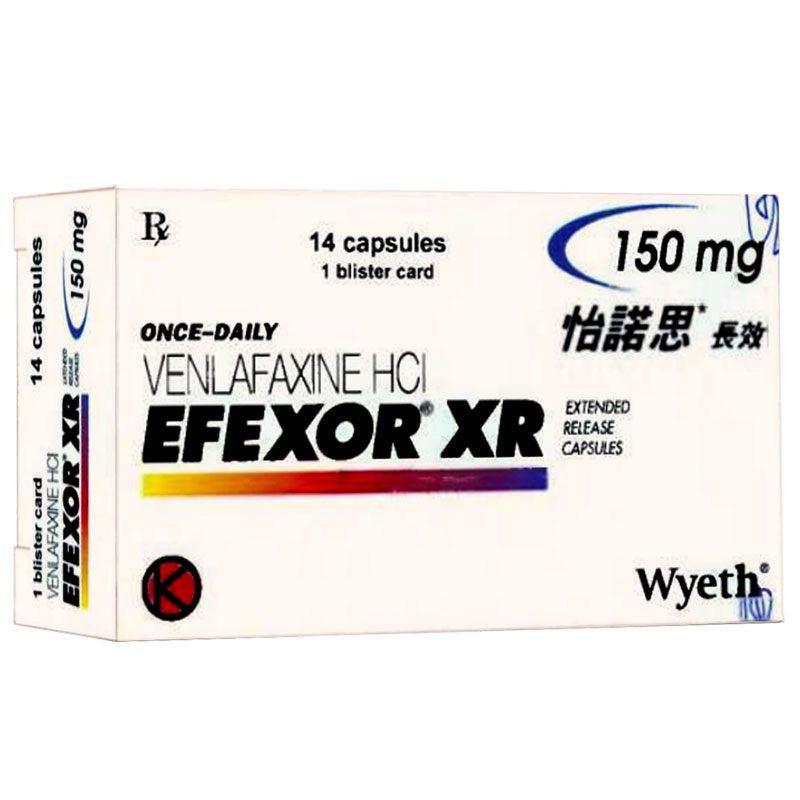
Venlafaxine known by its brand name Effexor XR, is a prescription medication used to treat various mental health conditions. In this article, I will explain its drug class, mechanism of action, uses, side effects, dosage recommendations, and more.
What is Venlafaxine (Effexor XR)?
Venlafaxine is an antidepressant drug mostly used to treat major depressive disorder (MDD), generalized anxiety disorder (GAD), social anxiety disorder (SAD), and panic disorder.
Drug Class of Venlafaxine
Serotonin-Norepinephrine Reuptake Inhibitors (SNRIs)
Venlafaxine boosts the amount of two neurotransmitters in the brain. The first one is serotonin, and the second one is norepinephrine. Both these chemicals play a key role in mood regulation, anxiety, and stress.
Mechanism of Action
Venlafaxine is a Serotonin-Norepinephrine Reuptake inhibitor. Thus, it works by blocking the reuptake of both serotonin and norepinephrine in the brain. After the reabsorption of these neurotransmitters, venlafaxine increases their availability in the brain, which helps to improve mood and reduce anxiety.
- Serotonin Reuptake Inhibition: Increases serotonin levels, improving mood and reducing anxiety.
- Norepinephrine Reuptake Inhibition: boost up the norepinephrine levels, potentially enhancing energy, focus, and mood.
Uses of Venlafaxine
It is indicated for several psychiatric conditions.
-
Major Depressive Disorder (MDD)
People suffering from major depressive disorder can be treated with venlafaxine. It helps to relieve symptoms, including persistent sadness, loss of interest, and fatigue.
-
Generalized Anxiety Disorder (GAD)
Additionally, it reduces anxiety, irritability, and restlessness in people suffering from GAD.
-
Social Anxiety Disorder (SAD)
Many Individuals suffering from social anxiety disorder can get relief from venlafaxine as it can reduce fear and anxiety in social situations.
-
Panic Disorder
It is also a treatment option for panic disorder, helping to reduce the frequency and severity of panic attacks.
Side Effects of Venlafaxine
Venlafaxine can cause some side effects. Not everyone will experience them, and some side effects may disappear over time.
- Gastrointestinal Effects
- Nausea
- Dry mouth
- Constipation
- Central Nervous System Effects
- Dizziness
- Insomnia
- Headache
- Sexual Side Effects
- Reduced libido
- Erectile dysfunction
- Other Side Effects
- Sweating
- Weight changes
- Increased blood pressure (at higher doses)
Serious Side Effects
- Suicidal thoughts or behavior
- Serotonin syndrome (symptoms include agitation, hallucinations, fever, fast heart rate)
- Severe allergic reactions (rash, swelling, difficulty breathing)
Get immediate help from a doctor if you experience any serious side effect.
Dosage Recommendations
The dosage of venlafaxine depends on the specific condition being treated and the patient’s response to the medication. Below are general dosage guidelines.
-
For Major Depressive Disorder (MDD)
- Starting dose: 75 mg per day (divided into two or three doses).
- Maintenance dose: 150-300 mg per day (depending on the patient’s response).
- Maximum dose: 375 mg per day.
-
For Generalized Anxiety Disorder (GAD)
- Starting dose: 75 mg per day.
- Maintenance dose: 150-225 mg per day.
- Maximum dose: 375 mg per day.
-
For Social Anxiety Disorder (SAD) and Panic Disorder
- Starting dose: 75 mg per day.
- Maintenance dose: 150 mg per day.
- Maximum dose: 375 mg per day.
Important Note: Dosage should be gradually adjusted based on the individual’s tolerance and response. It is important to follow the doctor’s instructions carefully to avoid side effects.
Popular Brand Names of Venlafaxine
The generic name for this drug is venlafaxine, but it is also available under various brand names. Below is a table summarizing three popular brands of venlafaxine and their specifications.
| Brand Name | Active Ingredient | Dosage Form | Strength | Contraindications | Common Interactions |
| Effexor XR | Venlafaxine | Extended-release capsule | 37.5 mg, 75 mg, 150 mg | Hypersensitivity to venlafaxine, MAOI use, severe liver disease | MAOIs, alcohol, NSAIDs, anticoagulants, other antidepressants |
| Venlafaxine HCl ER | Venlafaxine | Extended-release capsule | 37.5 mg, 75 mg, 150 mg | Hypersensitivity to venlafaxine, MAOI use | MAOIs, alcohol, SSRIs, SNRIs |
| Vensir XR | Venlafaxine | Extended-release tablet | 75 mg, 150 mg | Hypersensitivity to venlafaxine, MAOI use, severe kidney impairment | Alcohol, CNS depressants, other serotonin-affecting medications |
Contraindications
Venlafaxine should not be taken by individuals with:
- Hypersensitivity to venlafaxine or any of its components.
- Concurrent use of MAOIs (monoamine oxidase inhibitors), as this combination can cause a dangerous interaction known as serotonin syndrome.
- Severe liver disease, as it can affect drug metabolism.
Drug Interactions Of Venlafaxine
- Monoamine oxidase inhibitors (MAOIs): Combining venlafaxine with MAOIs can lead to serotonin syndrome, a potentially fatal condition.
- Alcohol: Drinking alcohol while on venlafaxine may increase the risk of side effects such as dizziness and drowsiness.
- Anticoagulants and NSAIDs: Increased risk of bleeding when taken with venlafaxine.
- Other antidepressants: Caution is needed when combining venlafaxine with SSRIs, other SNRIs, or tricyclic antidepressants due to the risk of serotonin syndrome.
Conclusion
Venlafaxine (Effexor XR) is a versatile and effective antidepressant that can significantly improve symptoms of depression, anxiety, and other mood disorders. While it offers numerous benefits, potential side effects and drug interactions should be carefully monitored. Always consult a healthcare provider to determine the appropriate dosage and ensure the safe use of this medication.
